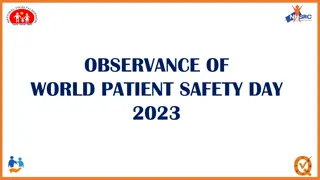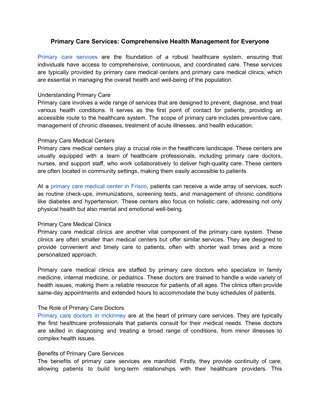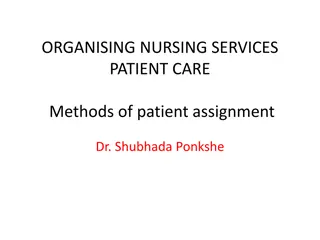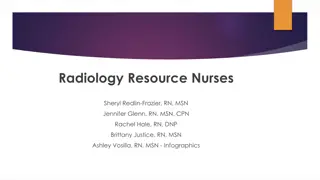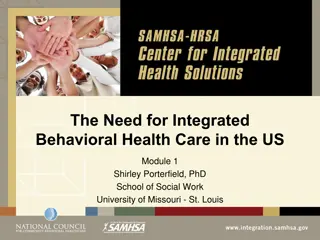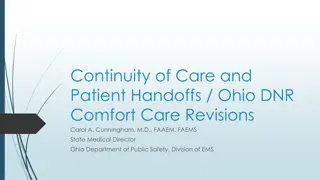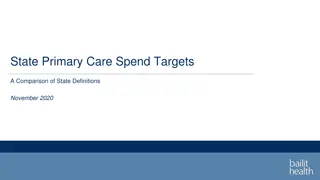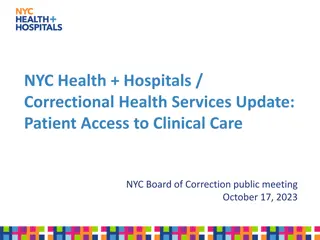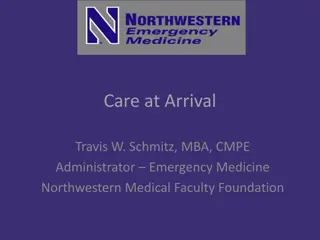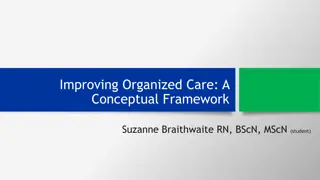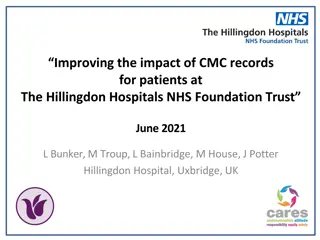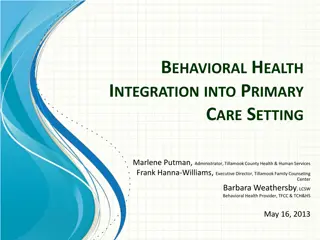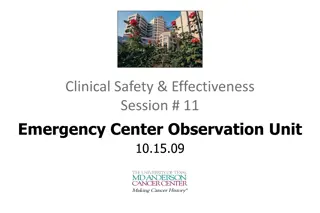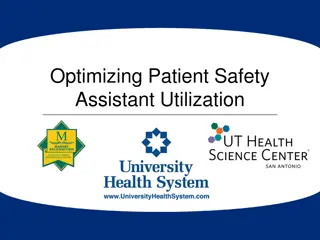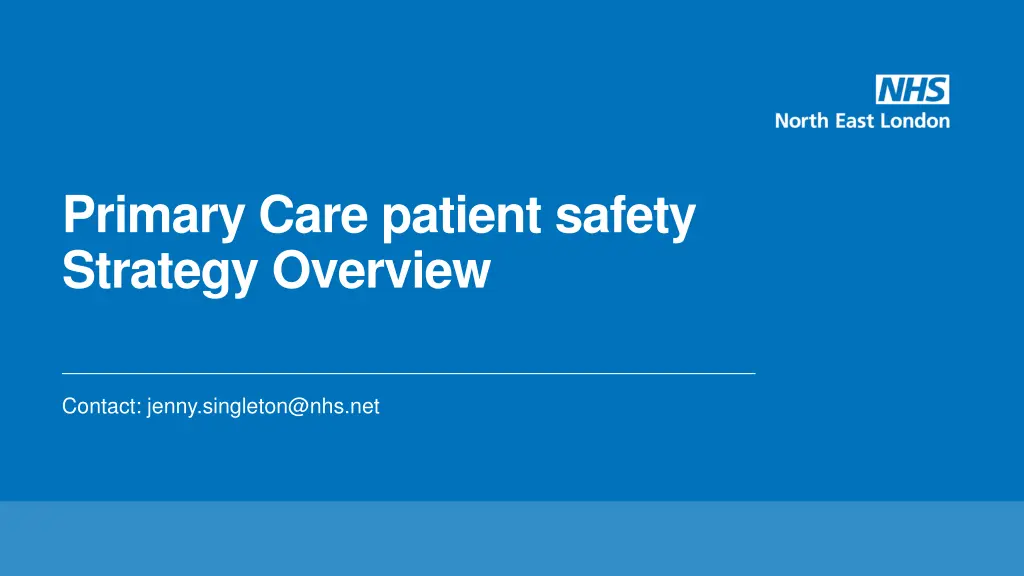
Enhancing Patient Safety in Primary Care: Strategy Overview
Discover the NHS Patient Safety Strategy, with a focus on embedding transformational changes to address patient safety issues. Explore the core foundations, strategic aims, and implementation details of the Primary Care Patient Safety Strategy for improved healthcare practices in England.
Download Presentation

Please find below an Image/Link to download the presentation.
The content on the website is provided AS IS for your information and personal use only. It may not be sold, licensed, or shared on other websites without obtaining consent from the author. If you encounter any issues during the download, it is possible that the publisher has removed the file from their server.
You are allowed to download the files provided on this website for personal or commercial use, subject to the condition that they are used lawfully. All files are the property of their respective owners.
The content on the website is provided AS IS for your information and personal use only. It may not be sold, licensed, or shared on other websites without obtaining consent from the author.
E N D
Presentation Transcript
Primary Care patient safety Strategy Overview Contact: jenny.singleton@nhs.net
Introduction The NHS Patient Safety Strategy was published in 2019. The focus was on NHS Trusts and CCGs/ICBs in terms of implementation and the standard NHS contract was changed to set out contract requirements to deliver key components. Patient Safety Culture Staff feel psychologically safe Value and respect diversity A compelling vision Good leadership at all levels A sense of teamwork Openness and support for learning The strategy seeks to embed transformational changes in the way the NHS understands and address issues of patient safety within organisations. It raises the profile of human and system factors as key drivers for patient safety. The Patient Safety Strategy outlines two core foundations: a patient safety culture and a patient safety system. Three strategic aims support delivery: Patient Safety Systems 1. Insight: improving understanding of safety by using intelligence from multiple sources of patient safety information; A shared understanding of safety across all ICS members A proportionate and localised approach to addressing patient safety concerns Compassionate engagement with those who are impacted by safety events A focus on learning and improvement 2. Involvement: equipping patients, staff and partners with the skills and opportunities to improve patient safety throughout the whole system; 3. Improvement:designing and supporting programmes that deliver effective and sustainable change in the most important areas. The Primary Care Patient Safety Strategy was published in September 2024.
Primary Care Patient Safety Strategy - implementation The strategy recognises capacity pressures in primary care and ICBs. The strategy focuses on existing processes and structures which can be used and built on no Grand Design. While the strategy is for all areas of primary care, some improvements are intended to be implemented first in general practice and the successes and learning then used in the rollout to community pharmacy, optometry and dental services.
The primary care strategy The new Primary care strategy reports that between 20,000 and 30,000 incidents of avoidable significant harm can be identified in general practice in England per year (Avery et al, 2020). The top 3 patient safety incident types in a retrospective general practice case note review were: diagnosis 61% medication-related 26% delayed referral 11%
The primary care strategy Recommendations for ICBs and primary care providers: Safety culture, safety systems and inequalities General practice, with ICBs support, to give staff the opportunity to complete the NHS general practice Staff Survey. Community pharmacy, optometry and dental service providers to support staff to complete local staff surveys where available and to act on the survey findings to improve safety culture and staff experience. All staff and students (clinical and non-clinical) in primary care to have access to complete the free online NHS patient safety syllabus training (https://www.e-lfh.org.uk/programmes/patient-safety-syllabus-training/) levels 1 and 2. All primary care staff to have access to a Freedom to Speak Up Guardian service that is independent of their organisation. This should be in place in NEL ICB by May 2025. ICBs to identify digital clinical safety officers and provide effective digital and implementation support and training. ICBs to procure safe digital products for general practice that meet quality assured standards.
The primary care strategy Recommendations for ICBs and primary care providers: 1. Insight ICB quality groups/committees and patient safety specialists to develop mechanisms that support the adoption of Learning From Patient Safety Events (LFPSE) and Patient Safety Incident Response Framework (PSIRF) in primary care, sharing of insight and learning, and improve communication across systems for primary care. ICBs should explore sharing using existing structures such as buddying/peer systems for practices/organisations, and PCN-based patient safety groups. All ICBs, general practices, community pharmacies, optometry providers and dental providers to register for an administrator account (https://record.learn-from-patient-safety-events.nhs.uk/) with LFPSE or to connect their local risk management system (https://gbr01.safelinks.protection.outlook.com/? and to report safety events. To provide feedback on the system and to encourage individual practitioners to register and report. General practice, with support from ICBs, to start implementing the Patient safety incident response framework (PSIRF) (https://www.england.nhs.uk/patient-safety/incident-response-framework/) that is proportionate, flexible and contextual. This could be at place or via GP federations or PCNs. Community pharmacy, optometry and dental service providers should also start to implement PSIRF where they feel confident to do so.
The primary care strategy There are a number of recommendations for ICBs and primary care providers: 2. Involvement GP, dental, pharmacy and optometry practices, place or PCNs start to identify patient safety leads and enable them to complete the free online NHS patient safety syllabus training levels 1 and 2 (https://www.e- lfh.org.uk/programmes/patientsafety-syllabus-training/) (with primary care module). GP, dental, pharmacy and optometry practices or PCNs start to identify two or more lay Patient Safety Partners (PSPs) in line with the Framework for involving patients in patient safety (https://www.england.nhs.uk/publication/framework-forinvolving-patients-in-patient-safety/),and enable them to complete the free online NHS patient safety syllabus training levels 1 and 2 (https://www.e- lfh.org.uk/programmes/patient-safety-syllabus-training/) (with primary care module). General practices to add patient safety to their PPG agendas. ICB Patient safety specialists (PSSs) to provide guidance and support for the local implementation of patient safety leads and PSPs.
The primary care strategy Recommendations for ICBs and primary care providers: 3. Improvement ICBs and GP practices to pilot approaches and share good practice for locally-derived patient safety improvements relating to the 3 patient safety themes of: diagnosis, medication and referral. Community pharmacies to continue to implement the Pharmacy Quality Scheme (https://cpe.org.uk/quality- andregulations/pharmacy-quality-scheme/pharmacy-quality-scheme-outcomes/) (PQS) improvement initiatives and to identify, develop and test novel approaches, and share good practice for locally-derived patient safety improvements. Optometry services and dental services to identify, develop and test novel approaches, and share good practice for locally-derived patient safety improvements.
Patient Safety Incident Response Framework The Patient Safety Incident Response Framework (PSIRF) replaces the Serious Incident Framework, and its introduction seeks to promote proportionality in relation to patient safety incidents and focus on learning and improvement. All NEL Trusts now have an agreed Response Framework and no longer report SIs. Serious Incident Framework Patient Safety Incident Reporting Framework What constitutes a serious incident is nationally mandated and providers must respond to all incidents that meet this threshold. There are some nationally mandated approaches that will remain the same (e.g. never events), however what constitutes a safety event is locally determined by providers. Providers are responsible for determining which events require a response and how this response should be managed. All serious incidents should be investigated using a standardised approach and timescales. Providers are accountable for the quality of incident responses and outcomes of this response. ICBs review and sign off serious incidents for approval. ICBs oversee effectiveness of provider systems for responding to events, providing support and guidance related to improving these systems. ICBs monitor numbers/themes and timescales of responses, providing scrutiny and assurance.
Learn from Patient Safety Events The Learn from Patient Safety Events (LFPSE) is a new national NHS service for the recording and analysis of patient safety events that occur in healthcare. It replaces key components of the old Serious Incident Framework (SIs). It is designed to include primary care organisations and some organisations in NEL are now using it to report patient safety incidents. 1. Revised taxonomy: Learning focussed data collection, minimising blame and promoting analysis of how things go wrong to better support targeted improvement 2. Machine learning: ML-enhanced anonymisation to reduce identifiability, real time ability to analyse free text, suggest learning resources to providers and identify new or under recognised risks across all harm levels. 3. Two way communication: Live automatic data sharing between local and national systems, meaning more timely response to issues and provision of feedback and reducing harm to patients 4. Self service data access: enables ICBs to review all reports made in their local system, enables PCNs to have an account as well as individual providers. 5. Improved data linkage and sharing options: Faster more direct ways to support e.g. CQC and MHRA to fulfil their duties around safety and learning.
Learn from Patient Safety Events Questions to consider What would you or can you prioritise? What can the ICB support or facilitate?


